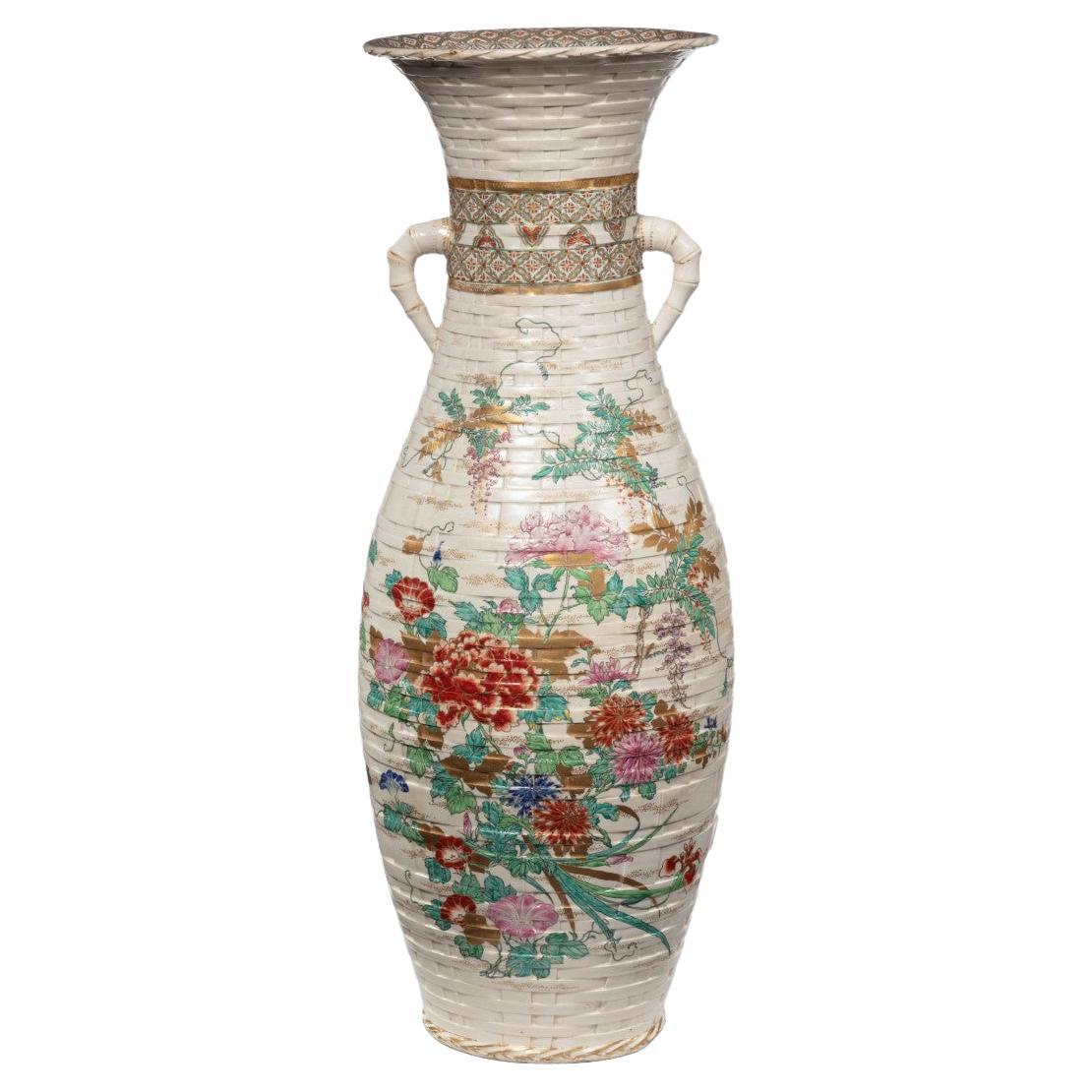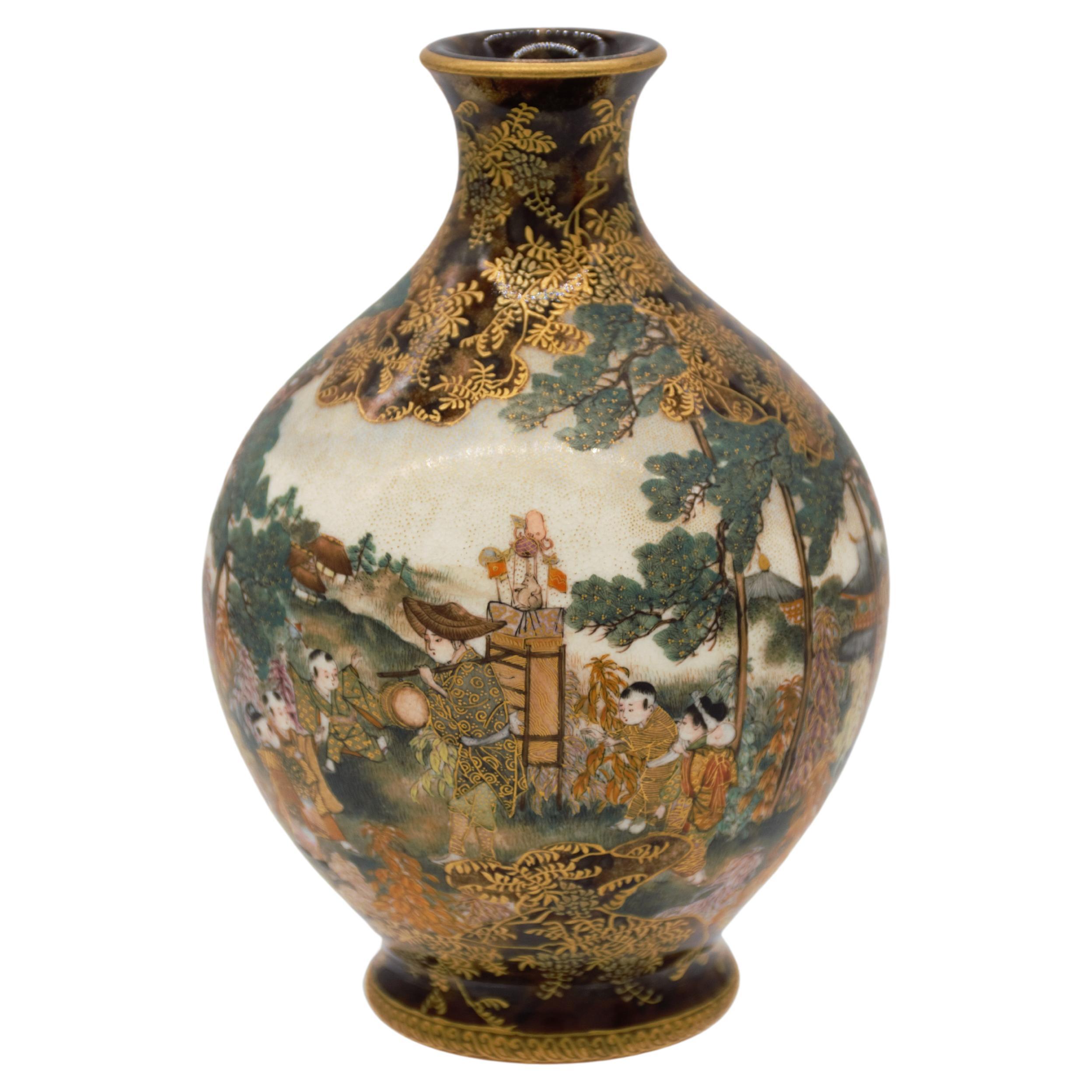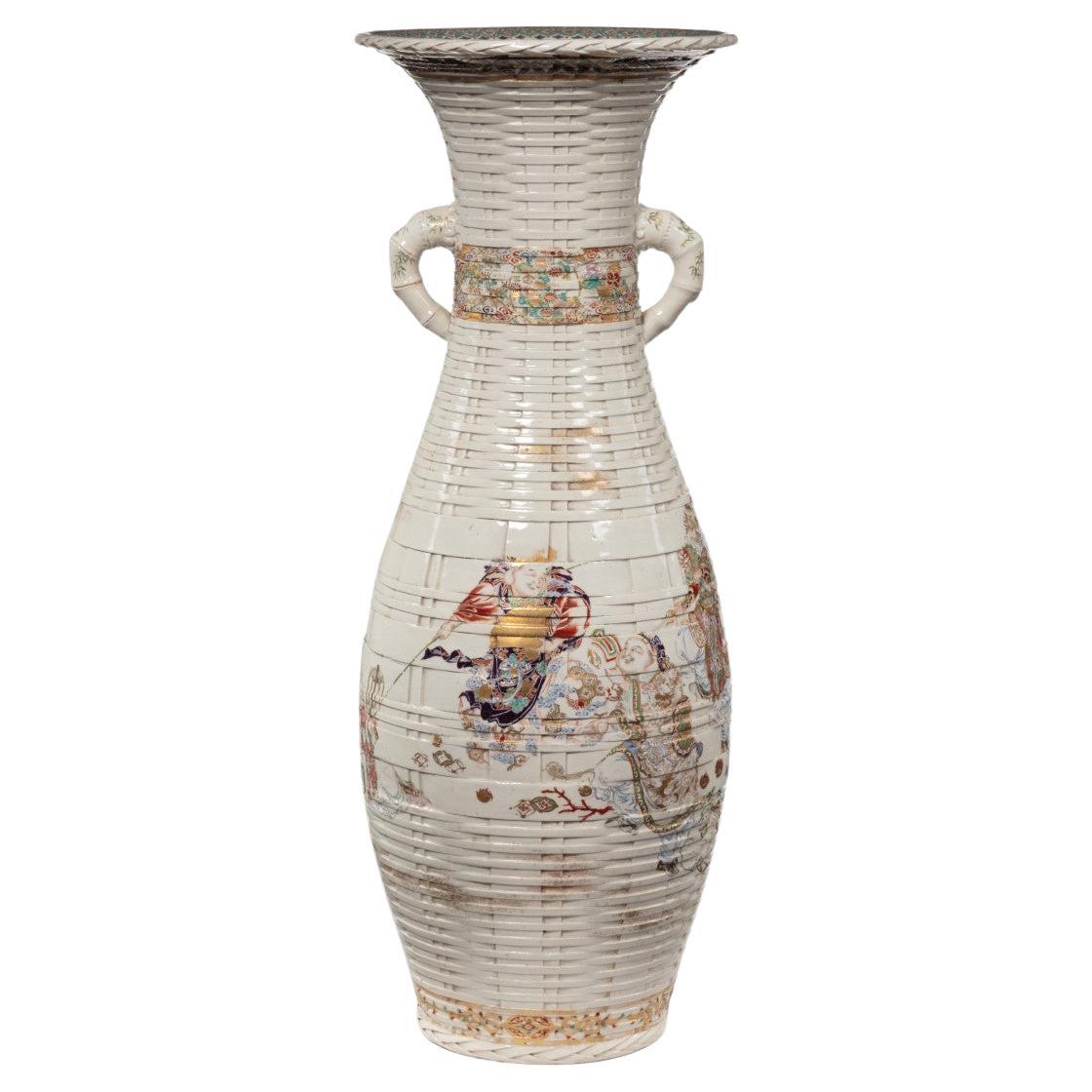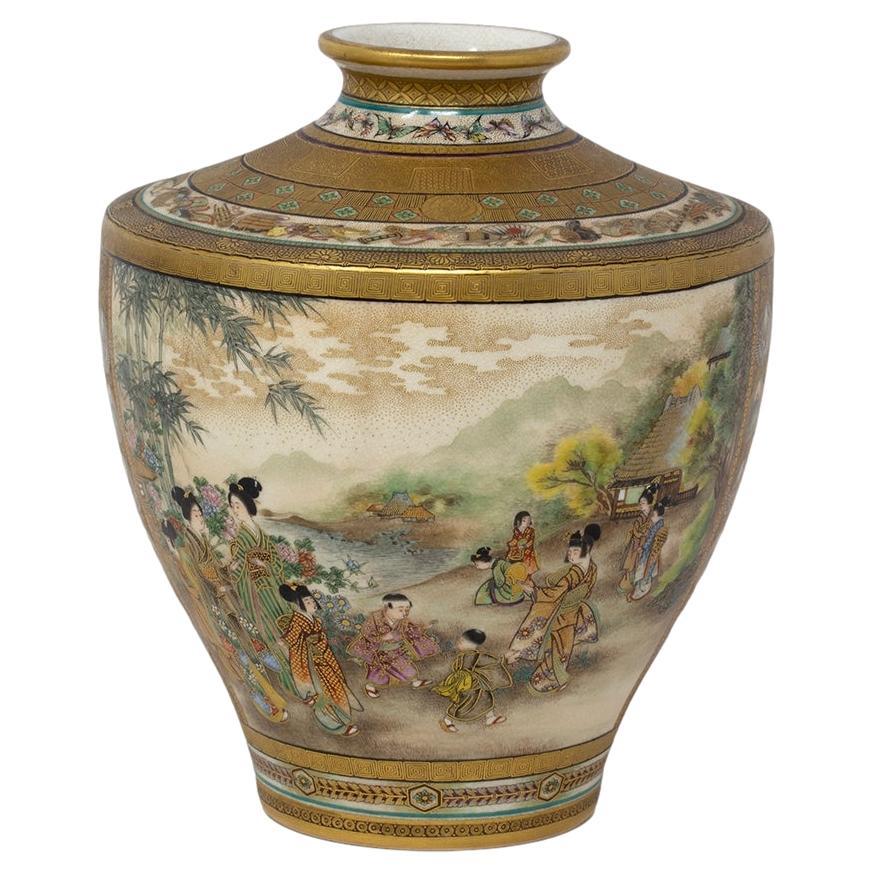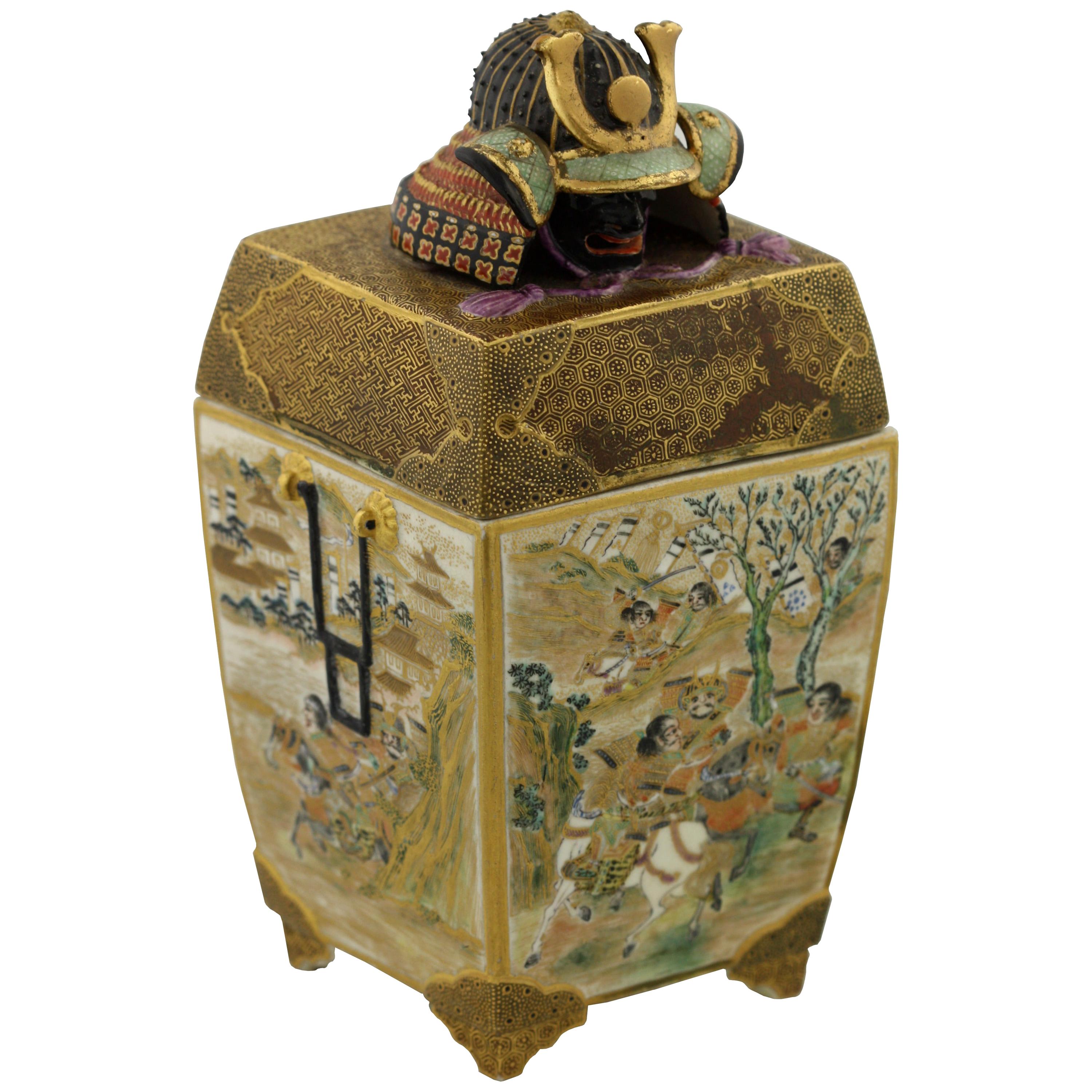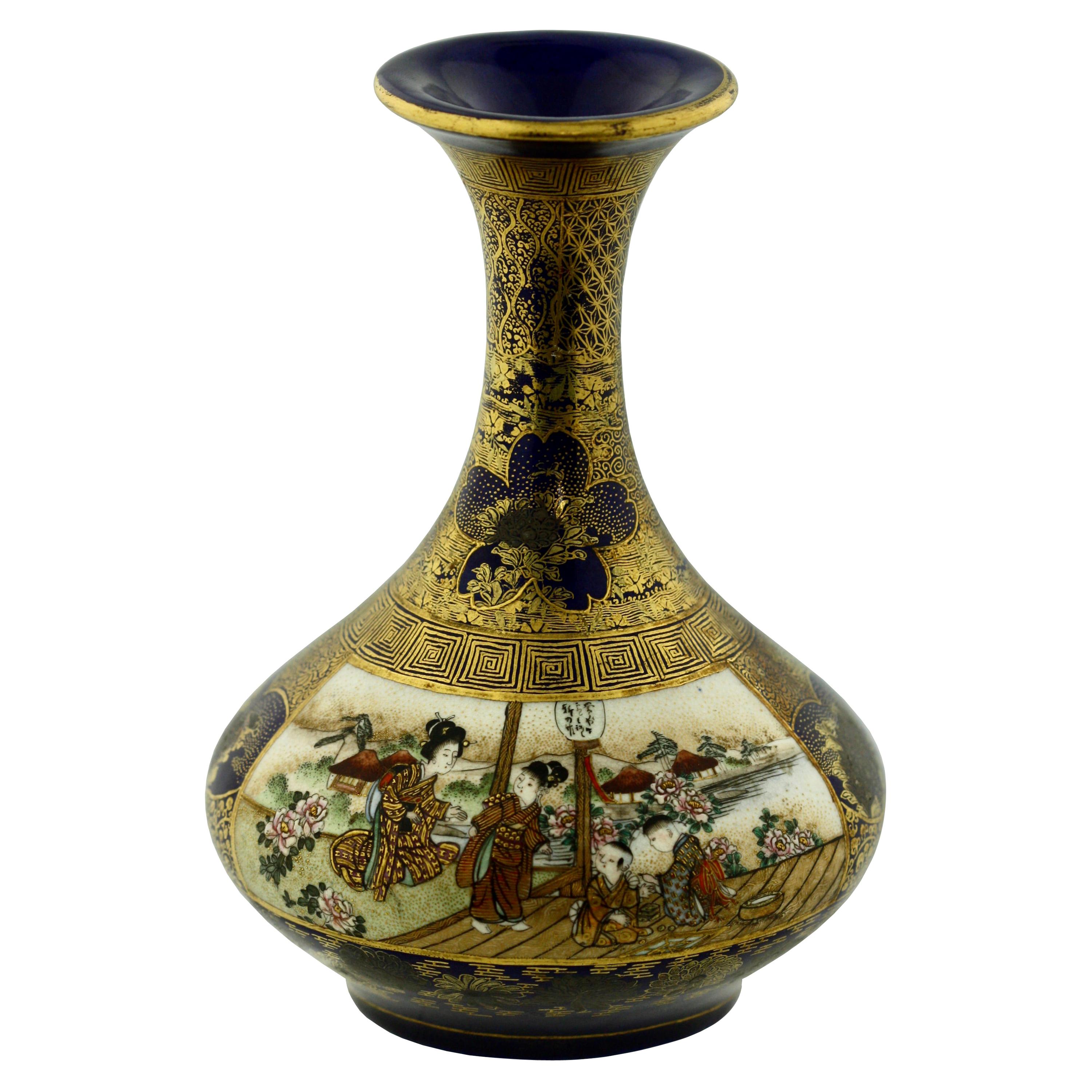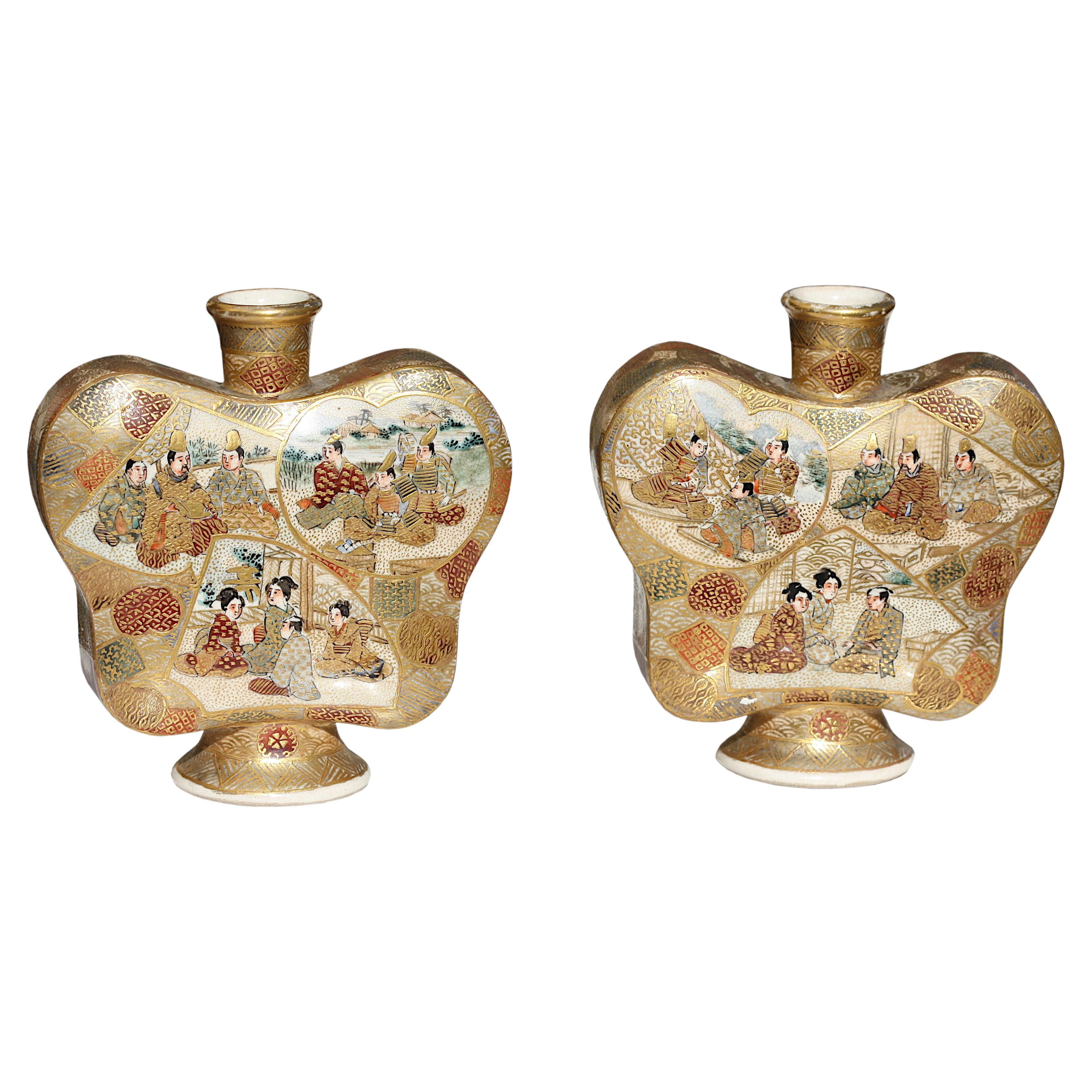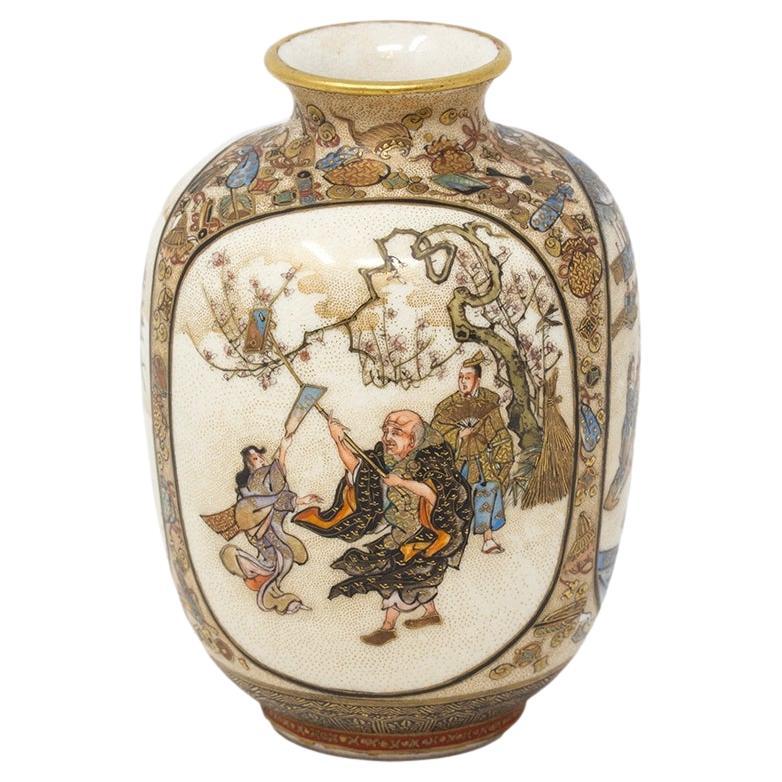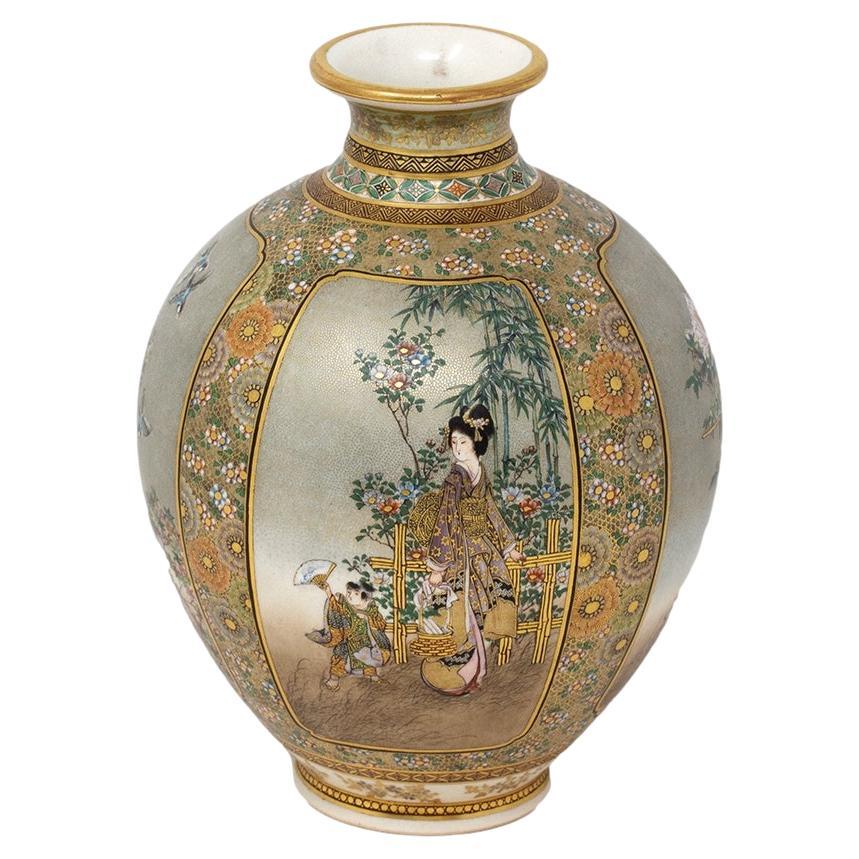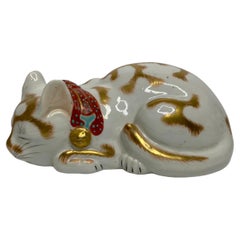
Satsuma Earthenware Vase, Ryozan Okamoto, Meiji Period
View Similar Items
Want more images or videos?
Request additional images or videos from the seller
1 of 10
Satsuma Earthenware Vase, Ryozan Okamoto, Meiji Period
About the Item
- Creator:Master Ryozan (Artist)
- Dimensions:Height: 7.09 in (18 cm)Diameter: 3.63 in (9.2 cm)
- Style:Meiji (Of the Period)
- Materials and Techniques:Earthenware,Fired
- Place of Origin:
- Period:
- Date of Manufacture:circa 1890
- Condition:Wear consistent with age and use.
- Seller Location:Gargrave, GB
- Reference Number:1stDibs: LU4397124563572
About the Seller
5.0
Vetted Seller
These experienced sellers undergo a comprehensive evaluation by our team of in-house experts.
Established in 1982
1stDibs seller since 2019
43 sales on 1stDibs
Typical response time: 1 hour
More From This SellerView All
- Sumidagawa pottery Monkeys vase, Ban-Ni, Japan, Meiji Period.By Sumida GawaLocated in Gargrave, North YorkshireSumidagawa ‘Monkeys’ vase, Ban-Ni, Japan, c. 1890, Meiji Period. £1,350.00 Sumidagawa pottery vase, signed Ban-Ni, Japan, c. 1890, Meiji Period. The large vase, sculpted with an amu...Category
Antique 1890s Japanese Meiji Ceramics
MaterialsPottery
- Kutani porcelain Green Pheasant, Japan, Meiji Period.By Kutani StudioLocated in Gargrave, North YorkshireKutani porcelain okimono of a Japanese Green Pheasant, Japan, Meiji Period. The pheasant modelled, perched upon a large gnarled branch. Decorated in typically vibrant enamels, and he...Category
Antique Early 1900s Japanese Meiji Ceramics
MaterialsPorcelain
- Kutani porcelain cat, Japan, c. 1900, Meiji Period.By Kutani StudioLocated in Gargrave, North YorkshireKutani porcelain okimono of a cat, c. 1900. Meiji Period. £490.00 Kutani porcelain okimono, Japan, c. 1900. Meiji Period. Finely modelled as a sleeping cat, its hair delineated in g...Category
Antique 1890s Japanese Meiji Ceramics
MaterialsPorcelain
- Imari ‘Black Ship’ bowl and cover, Japan, Meiji Period.By Imari PorcelainLocated in Gargrave, North YorkshireA Japanese Imari porcelain ‘Black Ship’ bowl and cover, Meiji Period. The bowl hand painted to one side with a large sailing ship with Dutch flags, whilst t...Category
Antique 19th Century Japanese Meiji Ceramics
MaterialsPorcelain
- Imari porcelain Carp dish, Arita, Japan, c. 1890, Meiji Period.By AritaLocated in Gargrave, North YorkshireJapanese Imari porcelain Carp dish, Arita, c. 1890, Meiji Period. The canted rectangular dish, moulded to the centre with a large carp, in low relief, hand painted in typical Imari c...Category
Antique 1890s Japanese Meiji Ceramics
MaterialsPorcelain
- Pair Chinese Imari porcelain and ormolu vases, c. 1700. Kangxi Period.Located in Gargrave, North YorkshireA fine pair of Chinese porcelain vases, c. 1700, Kangxi Period, ormolu mounted. The trumpet shaped vases, hand painted in Imari style, with exotic birds amongst flowering plants, abo...Category
Antique Early 18th Century Chinese Qing Ceramics
MaterialsPorcelain
You May Also Like
- Large Meiji Period Satsuma Earthenware Floor VaseLocated in Lymington, HampshireA large Meiji period Satsuma earthenware floor vase, the of baluster form, painted in pastel overglaze enamels and gilding with two large sprays of flowers including prunus blossom, ...Category
Antique 1870s Japanese Meiji Ceramics
MaterialsEnamel
- Satsuma earthenware vase by kinkozan, Meiji periodBy KinkozanLocated in Tel Aviv - Jaffa, ILthe body of this small marvelous vase is painted with a scene of a puppet show vendor with his wood backpack, on top of the backpack there are toys and dolls, he is surrounded with a group of 6 children, and on the background you can see a village. on the other side of the vase there is an amazing painting of flowers and on the sides there are two amazing strong pine trees, the amorphous background is decorated in a "Tortoiseshell" color and design that gives it a real character and which is quite rare to see on satsuma pottery. all the vase is over richly overpainted over the glaze with gold, which gives it its depth and realism. signed Kyoto Kinkozan zo, and sealed Kinkozan zo Kyoto’s Satsuma: The painting technique used in Kyoto’s Satsuma-style ware is said to be the invention of the sixth generation Kinkōzan Sōbei (1824–1884). The Kinkōzan were a famous family of Kyoto Awataguchi potters who made ceramics that were used at Shōren'in, a temple closely tied to the imperial family, and by the shoguns of the Edo government. In fact the shogun is said to have granted them the name Kinkōzan. With the upheavals at the end of the Edo period, however, and the reforms of the subsequent Meiji government, the potters lost their traditional patrons and had to develop new markets. Just at that time, the visit of a certain Westerner is said to have decided them to embark on overseas trade. By 1870, they had perfected Kyō Satsuma...Category
Antique 1890s Japanese Meiji Ceramics
MaterialsGold
- Pair of Meiji Period Satsuma Earthenware VasesLocated in Lymington, HampshireA pair of Meiji period Satsuma earthenware vases, each with applied elephant-mask handles, painted in overglaze pastel enamels and gilt with a continuous central frieze of sages and ...Category
Antique 1880s Japanese Meiji Ceramics
MaterialsEarthenware
- Large Meiji Period Satsuma Earthenware Floor VaseLocated in Lymington, HampshireA large Meiji period Satsuma earthenware floor vase, the skittle shaped body painted in pastel overglaze enamels and gilding with a continuous frieze of the Seven Gods...Category
Antique 1870s Japanese Meiji Ceramics
MaterialsEnamel
- Japanese Satsuma Earthenware Vase, Meiji PeriodLocated in West Palm Beach, FLJapanese Satsuma Earthenware Vase, Meiji Period, 1868-1912, of baluster form, the decorated in poly-chrome enamels and gilt on a clear crackle glaze with a Daimyo procession, the nec...Category
20th Century Ceramics
MaterialsCeramic
- Japanese Meiji Period Satsuma Vase Painted by Ryozan for the Yasuda CompanyLocated in Newark, EnglandThe vase of slightly bulbous form potted with a tapered body reaching a slightly pinched neck and rolled top rim is beautifully decorated with two large scenes. The first scene featu...Category
Antique Early 1900s Japanese Meiji Ceramics
MaterialsCeramic, Earthenware, Pottery
Recently Viewed
View AllMore Ways To Browse
Antique Satsuma Pottery
Antique Japanese Satsuma Pottery
Black Satsuma
Satsuma Flower Vase
Kyoto Satsuma
Kyoto Vase Satsuma
Ryozan Satsuma
Chinese Antique Porcelain Art
Antique Chinese Famille Rose
Japanese Porcelain Signed
18th Century Japanese Art
Japanese Antiques Blue
Chinese Canton
Chinese Canton China
Canton China
Asian Rose China
Japanese 17th
17th Century Japan
